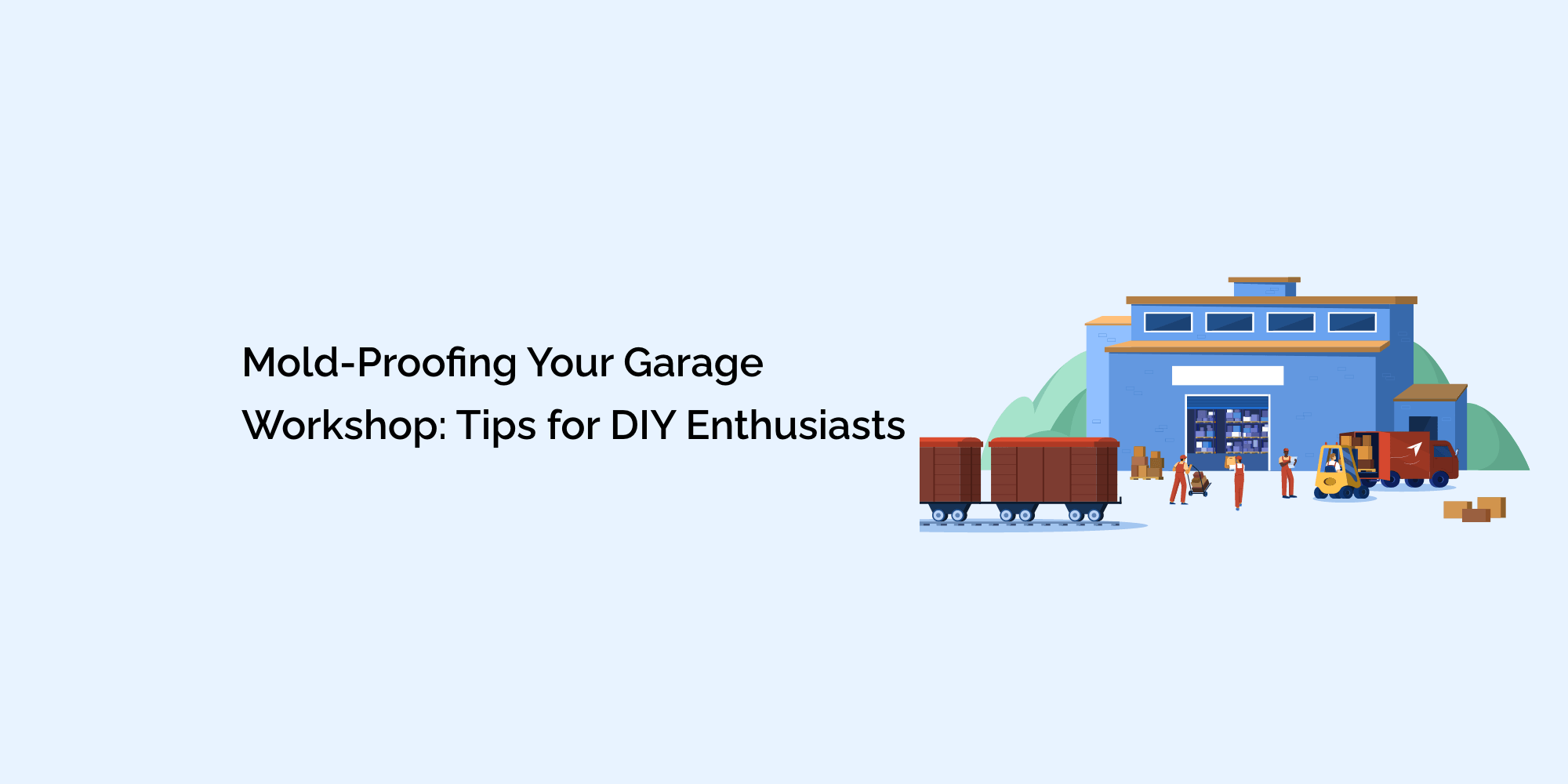For many DIY enthusiasts, the garage serves as the ultimate workshop, where creativity and craftsmanship come to life. However, garages are also prone to mold growth due to their unique environmental conditions.
To ensure a clean, healthy, and mold-free workspace, mold-proofing your garage workshop is essential.
In this comprehensive guide, we'll provide practical tips to help DIY enthusiasts create a mold-resistant environment and preserve the integrity of their projects and equipment.
Understanding the Mold Threat in Your Garage Workshop
Mold is a fungus that thrives in damp, humid conditions. Garages are particularly susceptible to mold growth due to several factors:
- Limited ventilation and airflow.
- Temperature fluctuations between seasons.
- Proximity to the outdoors, where moisture can infiltrate.
- Storage of organic materials like wood, paper, and cardboard that can serve as mold food sources.
With these challenges in mind, let's explore effective mold-proofing strategies for your garage workshop.
Tips for Mold-Proofing Your Garage Workshop
1. Maintain Proper Ventilation:
-
Install Exhaust Fans: Ensure your garage workshop has proper ventilation by installing exhaust fans or vents. This promotes airflow and prevents the buildup of moisture.
-
Use Natural Ventilation: During dry seasons, open windows and doors to let fresh air circulate through your workshop.
2. Control Humidity:
-
Use a Dehumidifier: Invest in a dehumidifier to maintain optimal humidity levels (typically below 50%) in your garage workshop. Empty the water reservoir regularly.
-
Monitor Humidity: Consider using a hygrometer to monitor humidity levels and make adjustments accordingly.
3. Insulate and Seal:
-
Proper Insulation: Insulate your garage's walls and ceilings with materials like fiberglass or foam board insulation to stabilize temperatures and reduce condensation.
-
Seal Gaps and Cracks: Seal any gaps and cracks in walls, windows, and doors with caulk, sealant, or weatherstripping to prevent moisture infiltration.
4. Choose Mold-Resistant Materials:
- Mold-Resistant Drywall: Opt for mold-resistant drywall and paint when finishing or renovating your garage workshop. These materials are less susceptible to mold growth.
5. Organize and Declutter:
-
Keep Surfaces Clear: Store tools and materials on shelves, racks, or pegboards to keep them off the floor and walls, allowing air to circulate freely.
-
Regular Cleaning: Perform regular cleaning to remove dust and debris, which can create hiding spots for mold spores.
6. Store Materials Wisely:
- Use Airtight Containers: Store materials like wood, paper, and cardboard in airtight containers to prevent moisture from affecting them.
7. Conduct Regular Inspections:
- Stay Vigilant: Regularly inspect your garage workshop for signs of moisture, leaks, or condensation. Address any issues promptly.
8. Mold-Resistant Paint:
- Consider Mold-Resistant Paint: You can apply mold-resistant paint to walls and surfaces as an extra layer of protection against mold growth.
9. Use a Humidistat:
- Install a Humidistat: Consider installing a humidistat that automatically activates exhaust fans or a dehumidifier when humidity levels rise above a set threshold.
Conclusion
Mold-proofing your garage workshop is essential for maintaining a clean, safe, and mold-free environment for your DIY projects and equipment.
By following these tips and implementing preventive measures like proper ventilation, humidity control, insulation, and regular maintenance, you can create a workspace that remains conducive to creativity and craftsmanship.
Stay proactive, stay organized, and keep moisture in check to enjoy a mold-resistant garage workshop for all your DIY endeavors.








